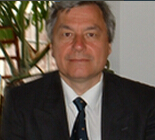Modeling and optimization means finding the best solution for a problem under given circumstances by using the complex mathematical models, some algorithms and some software. Mathematical optimization means that the problem to have solving must be respect one objective function, the constraints for all imposed parameters and one iterative algorithm that was validated by the experimental assisted research.
Many problems in aerospace, robotics, mechanical engineering, manufacturing systems, bioengineering and neurorehabilitation require optimization about multiple conflicting criteria, such as the speed of a system and its energy efficiency, or precision and stability, or require solving the multi objectives contradictory problems by using the Extenics theory.
The optimization problem can be single or multi- objective problem. In the multi-objective optimization (MOO) problem, these multiple objectives are treated independent between them.
Another important consideration when optimizing the performance of a robotic systems or aerospace devices is that the optimization work can be expensive such as time of assisted research, financial cost, or use of computational resources. In the expensive MOO case, the goal is to reduce the number of experiments needed to find the Pareto solutions. Methods such as descent gradient method or genetic algorithms are not designed to limit the number of objective functions. In any cases of optimization work the required steps are the following: establishing all desirable and needed optimizing ways; define the optimization functions conformity with the needed results; establishing the objective function's values and constraints violation; establishing the optimization mathematical algorithm; define detailed system parameters model; make the simulation procedure and obtain the results characteristics; comparing the results with the required performances and adjust iteratively the algorithm to touch the imposed target with respect strictly the objective functions.
[PDF]


